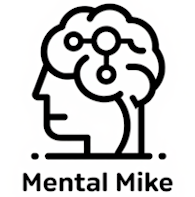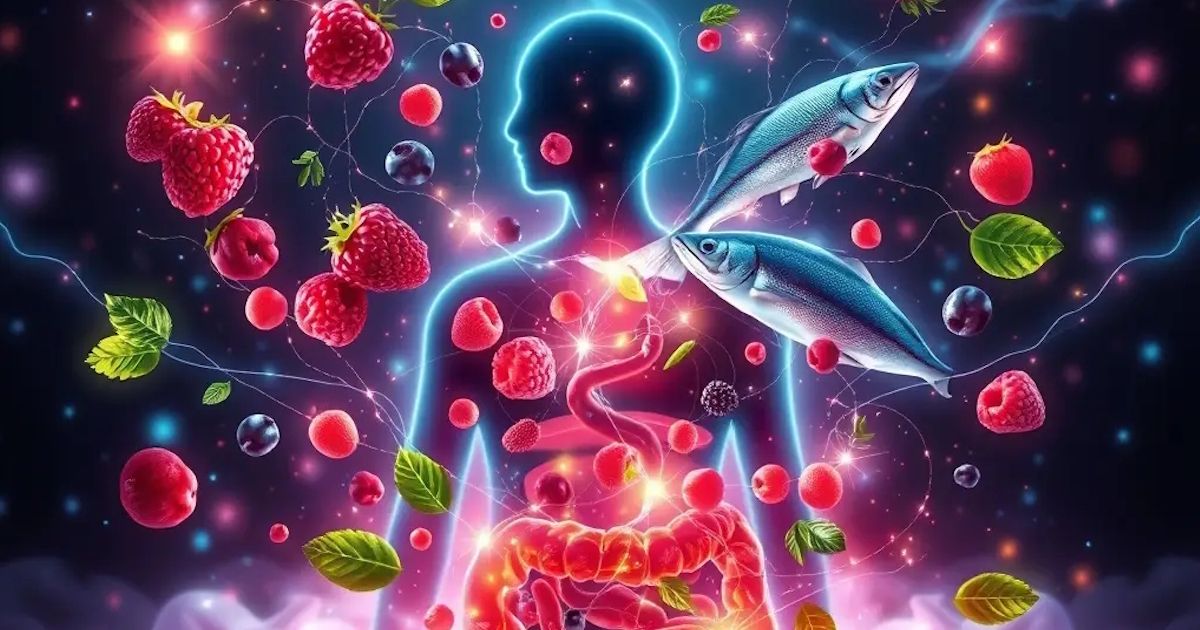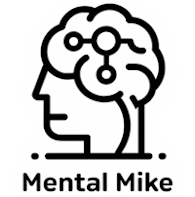When clients in recovery start asking questions about food, it’s often with a mix of desperation and curiosity. “Why am I craving sugar all the time?” “Why do I feel so down even though I’m not using anymore?” “Is there anything I can eat that will actually help me feel normal again?” In the Unified Flux Model (UFM), we answer these questions not with restrictive rules but with science-backed reverence: food is chemistry, but it’s also frequency. It co-regulates not only the body’s biological functions but also the emotional tone, spiritual receptivity, and energetic flow of recovery.
In this post, we’ll explore how the gut microbiome shapes mood and healing, how addiction disrupts nutritional and microbial balance, and how intentional eating becomes a powerful practice of energetic self-stewardship.
Addiction and the Gut-Brain-Energy Axis
The last decade of neuroscience has revolutionized our understanding of the gut. Far from being a passive digestive organ, the gut is now recognized as the body’s “second brain,” or more accurately, the enteric nervous system (Mayer, 2016). This system communicates continuously with the brain via the vagus nerve, influencing mood, stress responses, and inflammation.
More recently, we’ve learned that this axis is mediated by the gut microbiome - the trillions of microorganisms in the digestive tract that metabolize nutrients, synthesize neurotransmitters like serotonin and GABA, and influence inflammation and neural plasticity (Cryan et al., 2019).
In addiction, this axis is deeply compromised.
Chronic substance use:
Mood, Microbiome, and Neurochemical Recovery
Clients often ask, “Why do I feel worse when I’m doing everything right?” The answer often lies in the lag time between abstinence and restoration. Even after detox, the microbiome may take weeks or months to begin stabilizing, especially if antibiotic use, processed food, or chronic alcohol intake preceded recovery.
Key players in this recovery include:
Without microbial health and nutrient availability, the nervous system cannot rebuild its emotional scaffolding. The client might be clean, but the chemistry that creates hope, clarity, and stability is still under construction.
In the Unified Flux framework, we understand this as a dimmed energetic field, a frequency of survival, not vitality. And food, when used properly, becomes a sacred practice to restore that frequency.
Nutritional Co-regulation: What the Body is Really Asking For
Rather than forcing rigid food plans, the UFM approach invites clients to listen somatically and energetically to the needs of the body. Often, cravings are not weakness - they are signals of deficiency, imbalance, or emotional distress.
Sugar Cravings
Common in early recovery, sugar mimics the dopamine spike once provided by substances. But excess sugar exacerbates microbial imbalance and inflammation. We teach clients to replace rather than restrict - using fruit, healthy fats, and fermented foods to ease the transition.
Protein Deficiency
Many recovering individuals are low in amino acids like tryptophan and tyrosine, which are precursors to serotonin and dopamine. Supporting the microbiome with high-quality, whole food protein sources helps restore emotional stability.
Magnesium, Zinc, and Omega-3s
These micronutrients are essential for mood regulation and neurogenesis. We often recommend a supplement protocol or food sources rich in these nutrients to support neural and energetic repair.
In short, the food you eat becomes the energy you emit. Clients begin to feel not just fed, but aligned.
Energetic Principles of Eating: Beyond Calories
In the Unified Flux Model, every meal is an opportunity to reattune the body to safety and coherence. Here’s how we guide clients to integrate energy-based principles into their relationship with food:
1. Ritualize Mealtime
Eating in a state of stress shuts down digestion. We encourage grounding rituals before meals: placing a hand on the belly, breathing into the lower body, or offering gratitude for the molecules becoming part of one's recovery journey.
2. Choose Vibrationally Dense Foods
Fresh, whole, minimally processed foods carry a different energetic frequency than industrial, preserved, or hyper-processed items. This isn’t spiritual fluff, it aligns with studies on food quality, inflammation, and neural function (Jacka et al., 2017).
3. Rebuild Trust Through Choice
Addiction often hijacks agency. Every intentional meal becomes an act of energetic self-parenting. Clients are taught to track how different foods affect mood, digestion, and sleep, not as judgment, but as feedback loops.
4. Synchronize with Natural Rhythms
Circadian eating, anchoring meals to daylight hours, supports gut repair and sleep cycles. This rhythm enhances vagal tone, stabilizes energy levels, and helps re-sync the energetic clock of the body.
A Word on Trauma, Food, and Shame
Many clients come with disordered eating histories - binging, purging, or starving tied to emotional trauma. It’s essential to approach food recovery with compassion, not control. Shame is as disruptive to the energy field as any toxin. In UFM, we use somatic tracking, journaling, and energetic release rituals to explore how food behaviors may be tied to:
Final Words: Food as Sacred Chemistry
In early recovery, you are not just putting down the substance, you are rebuilding the field from which you operate. That field is electric, hormonal, microbial, and emotional. Food is one of the only substances we invite into that field multiple times a day.
What if each bite was a chance to say:
"I am choosing life.
I am feeding a brain that wants to feel.
I am restoring the energy signature that addiction dimmed."
When we treat food not as punishment or reward but as co-regulation, recovery deepens. The cravings change. The fog lifts. The night quiets.
And one day, seemingly out of nowhere, a client will say:
“I feel like myself again.”
That feeling is not magic.
It’s molecular.
It’s microbial.
It’s energetic.
It’s Flux.
In this post, we’ll explore how the gut microbiome shapes mood and healing, how addiction disrupts nutritional and microbial balance, and how intentional eating becomes a powerful practice of energetic self-stewardship.
Addiction and the Gut-Brain-Energy Axis
The last decade of neuroscience has revolutionized our understanding of the gut. Far from being a passive digestive organ, the gut is now recognized as the body’s “second brain,” or more accurately, the enteric nervous system (Mayer, 2016). This system communicates continuously with the brain via the vagus nerve, influencing mood, stress responses, and inflammation.
More recently, we’ve learned that this axis is mediated by the gut microbiome - the trillions of microorganisms in the digestive tract that metabolize nutrients, synthesize neurotransmitters like serotonin and GABA, and influence inflammation and neural plasticity (Cryan et al., 2019).
In addiction, this axis is deeply compromised.
Chronic substance use:
- Alters the gut microbial landscape, increasing pathogenic strains and reducing beneficial ones.
- Increases intestinal permeability (“leaky gut”), allowing inflammatory compounds into the bloodstream.
-
Impairs nutrient absorption, leaving the brain and body undernourished at the molecular level.
In UFM terms, this creates a disrupted frequency: the body’s biochemical rhythm is off-key, and the energetic flow between gut, heart, and brain becomes chaotic or stalled. This is why early recovery often comes with mood instability, cravings, exhaustion, and even depression - not just as psychological detox, but as a literal nutritional and microbial withdrawal.
Mood, Microbiome, and Neurochemical Recovery
Clients often ask, “Why do I feel worse when I’m doing everything right?” The answer often lies in the lag time between abstinence and restoration. Even after detox, the microbiome may take weeks or months to begin stabilizing, especially if antibiotic use, processed food, or chronic alcohol intake preceded recovery.
Key players in this recovery include:
- Serotonin, 90% of which is produced in the gut, regulates mood, sleep, and impulse control.
- GABA, a calming neurotransmitter produced by some gut bacteria, helps regulate anxiety and cravings.
- Dopamine, often depleted post-addiction, is also modulated by microbial metabolites and amino acid availability.
Without microbial health and nutrient availability, the nervous system cannot rebuild its emotional scaffolding. The client might be clean, but the chemistry that creates hope, clarity, and stability is still under construction.
In the Unified Flux framework, we understand this as a dimmed energetic field, a frequency of survival, not vitality. And food, when used properly, becomes a sacred practice to restore that frequency.
Nutritional Co-regulation: What the Body is Really Asking For
Rather than forcing rigid food plans, the UFM approach invites clients to listen somatically and energetically to the needs of the body. Often, cravings are not weakness - they are signals of deficiency, imbalance, or emotional distress.
Sugar Cravings
Common in early recovery, sugar mimics the dopamine spike once provided by substances. But excess sugar exacerbates microbial imbalance and inflammation. We teach clients to replace rather than restrict - using fruit, healthy fats, and fermented foods to ease the transition.
Protein Deficiency
Many recovering individuals are low in amino acids like tryptophan and tyrosine, which are precursors to serotonin and dopamine. Supporting the microbiome with high-quality, whole food protein sources helps restore emotional stability.
Magnesium, Zinc, and Omega-3s
These micronutrients are essential for mood regulation and neurogenesis. We often recommend a supplement protocol or food sources rich in these nutrients to support neural and energetic repair.
In short, the food you eat becomes the energy you emit. Clients begin to feel not just fed, but aligned.
Energetic Principles of Eating: Beyond Calories
In the Unified Flux Model, every meal is an opportunity to reattune the body to safety and coherence. Here’s how we guide clients to integrate energy-based principles into their relationship with food:
1. Ritualize Mealtime
Eating in a state of stress shuts down digestion. We encourage grounding rituals before meals: placing a hand on the belly, breathing into the lower body, or offering gratitude for the molecules becoming part of one's recovery journey.
2. Choose Vibrationally Dense Foods
Fresh, whole, minimally processed foods carry a different energetic frequency than industrial, preserved, or hyper-processed items. This isn’t spiritual fluff, it aligns with studies on food quality, inflammation, and neural function (Jacka et al., 2017).
3. Rebuild Trust Through Choice
Addiction often hijacks agency. Every intentional meal becomes an act of energetic self-parenting. Clients are taught to track how different foods affect mood, digestion, and sleep, not as judgment, but as feedback loops.
4. Synchronize with Natural Rhythms
Circadian eating, anchoring meals to daylight hours, supports gut repair and sleep cycles. This rhythm enhances vagal tone, stabilizes energy levels, and helps re-sync the energetic clock of the body.
A Word on Trauma, Food, and Shame
Many clients come with disordered eating histories - binging, purging, or starving tied to emotional trauma. It’s essential to approach food recovery with compassion, not control. Shame is as disruptive to the energy field as any toxin. In UFM, we use somatic tracking, journaling, and energetic release rituals to explore how food behaviors may be tied to:
- Early relational wounding
- Attempts to control chaos
- Emotional avoidance or numbing
- Food becomes a portal - not just for nourishment, but for relational repair with the self.
Final Words: Food as Sacred Chemistry
In early recovery, you are not just putting down the substance, you are rebuilding the field from which you operate. That field is electric, hormonal, microbial, and emotional. Food is one of the only substances we invite into that field multiple times a day.
What if each bite was a chance to say:
"I am choosing life.
I am feeding a brain that wants to feel.
I am restoring the energy signature that addiction dimmed."
When we treat food not as punishment or reward but as co-regulation, recovery deepens. The cravings change. The fog lifts. The night quiets.
And one day, seemingly out of nowhere, a client will say:
“I feel like myself again.”
That feeling is not magic.
It’s molecular.
It’s microbial.
It’s energetic.
It’s Flux.
References
Cryan, J. F., O’Riordan, K. J., Cowan, C. S., Sandhu, K. V., Bastiaanssen, T. F., Boehme, M., ... & Dinan, T. G. (2019). The microbiota-gut-brain axis. Physiological Reviews, 99(4), 1877–2013. https://doi.org/10.1152/physrev.00018.2018
Jacka, F. N., O'Neil, A., Opie, R., Itsiopoulos, C., Cotton, S., Mohebbi, M., ... & Berk, M. (2017). A randomised controlled trial of dietary improvement for adults with major depression (the ‘SMILES’ trial). BMC Medicine, 15(1), 23. https://doi.org/10.1186/s12916-017-0791-y
Mayer, E. A. (2016). The mind-gut connection: How the hidden conversation within our bodies impacts our mood, our choices, and our overall health. Harper Wave.
Jacka, F. N., O'Neil, A., Opie, R., Itsiopoulos, C., Cotton, S., Mohebbi, M., ... & Berk, M. (2017). A randomised controlled trial of dietary improvement for adults with major depression (the ‘SMILES’ trial). BMC Medicine, 15(1), 23. https://doi.org/10.1186/s12916-017-0791-y
Mayer, E. A. (2016). The mind-gut connection: How the hidden conversation within our bodies impacts our mood, our choices, and our overall health. Harper Wave.



